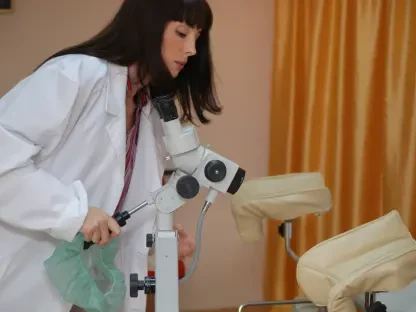In a healthcare landscape increasingly focused on efficiency and quality, managing routine radiology claims emerges as a vital opportunity to achieve both economic savings and enhanced patient care. With healthcare providers under immense pressure to cut costs while maintaining high standards of patient services, routine radiology—a category encompassing X-rays, ultrasounds, and non-cardiac nuclear medicine—stands out as a prime area where improvements can be made. Often overlooked, these services typically do not require prior authorization, presenting a largely untapped avenue for cost management that can potentially yield significant financial and clinical benefits.
Unwarranted Imaging: A Hidden Burden
Within the U.S. healthcare system, the unnecessary use of medical imaging contributes significantly to overall financial strain. It is estimated that approximately 30% of the $100 billion spent annually on medical imaging can be deemed unnecessary. This excessive use not only imposes financial burdens on healthcare systems but also subjects patients to undue radiation exposure. Such exposure heightens the risk of subsequent medical procedures that may be both costly and detrimental to patient health outcomes. Unwarranted imaging thus becomes a dual-edged issue: it poses economic challenges and threatens the quality of care.
Highlighting the criticality with empirical data, recent analyses revealed that substantial spending on medical imaging could be minimized. A case in point is a commercial health plan that, on average, expended $389 per member each month on medical imaging, with a striking 35% of this investment routed to routine radiology. Further scrutiny into these expenditures unveiled that about 8% of routine radiology claims were inconsistent with established care guidelines. This misalignment often manifests through wasteful practices, including needless preoperative chest X-rays in healthy individuals, redundant examinations, and inappropriate bone age studies. Addressing these inefficiencies promises not only cost reduction but also an uplift in care quality.
Solutions Through Automated Claims Management
Embracing policy-driven automated claims management presents a promising route to resolving the inefficiencies inherent in routine radiology management. This approach facilitates a streamlined post-service, pre-payment evaluation of claims, ensuring compliance with a structured set of policies tailored to national standards and specific plan preferences. Unlike traditional methods that may delay care through mandatory prior authorizations, an automated solution operates seamlessly, not impeding patient services nor imposing financial liabilities for deemed unnecessary exams. By establishing coding denials as provider responsibilities, the system inherently encourages adherence to best-practice protocols, thus fostering a culture of quality improvement.
The shift towards technological solutions reflects broader industry movements favoring value-based care, which prioritizes patient outcomes and service quality over sheer volume. Automated systems are crucial to this evolution, offering healthcare plans the tools to efficiently manage routine radiology and curb unwarranted expenditures while ensuring patients access vital, appropriate diagnostic services. The implementation of such solutions embodies a tactical advancement in healthcare service delivery, converging both fiscal responsibility and patient-centric care within a cohesive framework.
Collaborative Engagement and Financial Impacts
Integrating healthcare providers into the transition towards effective routine radiology management stands as a pivotal aspect in achieving desired outcomes. By engaging providers through education and actionable feedback, health plans can foster greater consistency in adhering to clinical guidelines. This collaborative effort promises improved patient outcomes and a marked reduction in avoidable costs associated with inappropriate imaging practices. The evolution in routine radiology management equates to more than monetary savings; it heralds a paradigm shift towards enhanced patient safety and overall satisfaction.
Financial metrics further corroborate this narrative; for instance, innovative management strategies can yield savings of up to $1 per member per month. By minimizing unwarranted procedures and their corresponding downstream interventions, healthcare plans see tangible benefits, reflected in both reduced expenditures and higher satisfaction levels. This approach demands a skillful balance between technocratic efficiency and empathetic patient care, a dual objective that aligns perfectly with contemporary healthcare goals.
Towards a Value-Driven Healthcare Model
In today’s healthcare environment, where efficiency and quality are more crucial than ever, managing routine radiology claims is a key area for achieving cost savings and better patient care. Healthcare providers face intense pressure to reduce expenses without compromising patient service standards. Routine radiology services, which include X-rays, ultrasounds, and non-cardiac nuclear medicine, present a promising area for improvement. These services are often overlooked because they typically don’t require prior authorization, offering a largely unexplored potential for effective cost management. By focusing on this area, healthcare providers can not only streamline operations but also realize substantial financial and clinical advantages. Investing in efficient management of these claims provides a strategic approach to cut costs while enhancing the quality of care. Harnessing advanced technologies and streamlined processes can further enhance the effectiveness of routine radiology services, ultimately benefiting both healthcare systems and patients alike.









